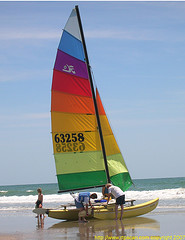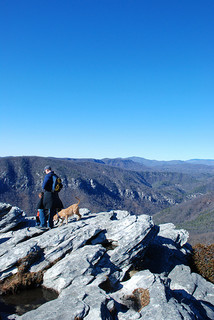See also: Cape Hatteras Lighthouse; Currituck Beach Lighthouse; Lake Mattamuskeet; NC Museum of History; NC Museum of Natural Sciences; Oakdale Cemetery (Wilmington, NC); Oak Island Lighthouse; Roadside Attractions; State Transportation Signs

North Carolina is the nation's variety vacation land, ranking eighth in the nation for visitation. Recreational opportunities abound throughout the state. Boating, swimming, saltwater fishing, and most other water sports are enjoyed along the North Carolina coast. The mountains offer scenic beauty and a variety of activities, including hiking, golfing, whitewater rafting , and skiing. Horseback riding, boating, fishing and golfing are popular activities in the piedmont region. North Carolina is recognized worldwide for its more than 450 golf courses located throughout the state.

Recreation areas in North Carolina include the Great Smoky Mountain National Park, the Blue Ridge Parkway, Cape Hatteras and Cape Lookout National Forests, and 36 state parks and recreation areas. Park facilities include more than 60 public campgrounds. In addition, North Carolina has more than 300 private camping facilities. The North Carolina Zoological Park, the nation's first state operated national-habitat zoo, is located in Asheboro. Other attractions include the Carowinds theme park and the Charlotte Motor Speedway.
North Carolina is a wonderland of cultural and historic activities and sites. Symphonies, museums, summer theaters, and art and crafts festivals are found throughout North Carolina.
Some of the state's most popular cultural attractions include the North Carolina Museum of Art, the North Carolina Museum of Natural History, the American Dance Festival, "The Lost Colony" Outdoor Drama, the North Carolina Symphony and the North Carolina Maritime Museum in Carteret County.
Historic sites include the Wright Brothers National Memorial, restored Old Salem Village, the Carl Sandburg and Thomas Wolfe homes, Tryon Palace, Biltmore House and Gardens, Roanoke Island, Cape Hatteras Lighthouse, Duke University Museum of Art, and the Woolworth's Building in Greensboro, the location where, in 1960, four black students from North Carolina A&T University seated themselves at a "whites only" counter.